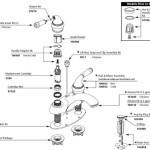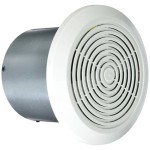Why Does Bathroom Smell Like Sewer?
A foul odor emanating from the bathroom, resembling that of a sewer, is an unpleasant and potentially concerning issue. This unpleasant smell can be caused by various factors, ranging from simple maintenance oversights to more complex plumbing problems. Understanding the underlying causes and implementing effective solutions can help eliminate this pesky odor and restore a fresh and inviting bathroom environment.
Common Causes of Sewer Smell in Bathrooms
1. Dry or Faulty P-Trap
The P-trap, a curved section of pipe beneath the sink or toilet, is designed to hold water, acting as a barrier that prevents sewer gases from escaping into the bathroom. If the P-trap becomes dry, due to infrequent water usage or a faulty seal, sewer gases can seep through and create an unpleasant odor. Ensuring the P-trap is properly filled with water and replacing any worn or damaged seals can resolve this issue.
2. Clogged or Leaking Drainpipe
Clogged or leaking drainpipes can allow sewer gases and wastewater to escape, resulting in a foul smell. Hair, soap scum, and other debris can accumulate over time, obstructing the drainpipe and hindering proper drainage. Leaks in drainpipes, caused by loose connections or damaged pipes, can also contribute to the odor by allowing wastewater to seep through. Regular drain cleaning and prompt repair of any leaks can prevent these issues.
3. Improperly Vented Plumbing System
A properly vented plumbing system is crucial for preventing sewer odors from entering the bathroom. Vent pipes allow sewer gases to escape to the outside, away from living areas. If the vent pipes are blocked or improperly installed, sewer gases can back up into the bathroom, causing the unpleasant smell. Ensuring proper ventilation by clearing any obstructions and inspecting the vent system for leaks or damage is essential.
4. Damaged or Missing Toilet Wax Ring
The toilet wax ring, located between the toilet base and the drain flange, seals the connection and prevents sewer gases from escaping. Over time, the wax ring can deteriorate or become damaged, creating a gap that allows sewer gases to leak into the bathroom. Replacing the wax ring with a new one can eliminate this odor source.
5. Dry Vent Loop
A dry vent loop is a section of pipe that connects the bathroom drain to the main vent stack. It helps prevent sewer gases from backing up into the bathroom when water is drained. However, if the dry vent loop becomes dry, due to evaporation or a lack of water usage, sewer gases can enter the bathroom. Pouring water down the drain regularly or installing a small vent fan in the bathroom can prevent the dry vent loop from drying out.
6. Bacteria Build-Up
Bacteria thriving in the moist environment of the bathroom can also contribute to sewer-like odors. These bacteria can accumulate in drains, on shower curtains, or in other areas where moisture lingers. Regular cleaning and disinfection of bathroom surfaces, including drains and shower curtains, can help reduce bacteria build-up and eliminate the associated odors.
Preventing Sewer Smell in Bathrooms
Regular Maintenance:
Regular maintenance practices, such as running water through drains, cleaning shower curtains, and inspecting plumbing fixtures for leaks, can help prevent sewer odors from developing. This proactive approach reduces the likelihood of clogs, leaks, and other issues that can lead to unpleasant smells.
Use Drain Cleaners Periodically:
Using drain cleaners periodically can help dissolve hair, soap scum, and other organic matter that can accumulate in drains, preventing clogs and the associated odors. Avoid using harsh chemical drain cleaners that can damage pipes; instead, opt for enzymatic drain cleaners that use natural enzymes to break down organic matter.
Ensure Proper Ventilation:
Adequate ventilation is crucial for preventing sewer odors from lingering in the bathroom. Open windows or use exhaust fans when showering or using the bathroom to remove moisture and sewer gases from the air. If natural ventilation is insufficient, consider installing a bathroom exhaust fan to enhance air circulation.
Inspect and Repair Plumbing Regularly:
Regular inspections of plumbing fixtures, pipes, and seals can help identify potential issues before they lead to leaks or other problems. Check for loose connections, damaged pipes, and worn seals, and address any issues promptly to prevent sewer odors from entering the bathroom.
Conclusion
Eliminating sewer-like odors in the bathroom requires a combination of understanding the underlying causes and implementing effective solutions. By addressing common issues such as dry P-traps, clogged drains, improper ventilation, damaged toilet wax rings, dry vent loops, and bacteria build-up, you can restore a fresh and inviting bathroom environment. Regular maintenance practices, proper ventilation, and prompt repair of plumbing issues can help prevent these unpleasant odors from recurring, ensuring a comfortable and hygienic bathroom space.

Why Does Bathroom Smell Like Sewage Crystal Blue
My Bathroom Smells Bad But Only When Its Hot Outside It Also Will Slightly Go Away I Run The Sink And Toilet Bathtub Any Thoughts On What Is

What Causes A Sewer Smell In The Bathroom Make It Right

Why Does My Toilet Smell Like Sewage 5 Causes Solutions

Why Is There A Sewer Odor In My Bathroom Ben Franklin Bay Area

Why Does My Bathroom Smell Like Sewage Metro Flow Plumbing
What To Do When You Notice A Sewer Smell In Bathroom Spaces Howstuffworks

Why Does My Toilet Smell Like Sewer Austest Pipeline

Smelly Bathroom 4 Tips From Our Bentleigh Plumbers Watermaster Plumbing

Sewer Smell In Bathroom How To Identify And Fix The Problem
See Also







